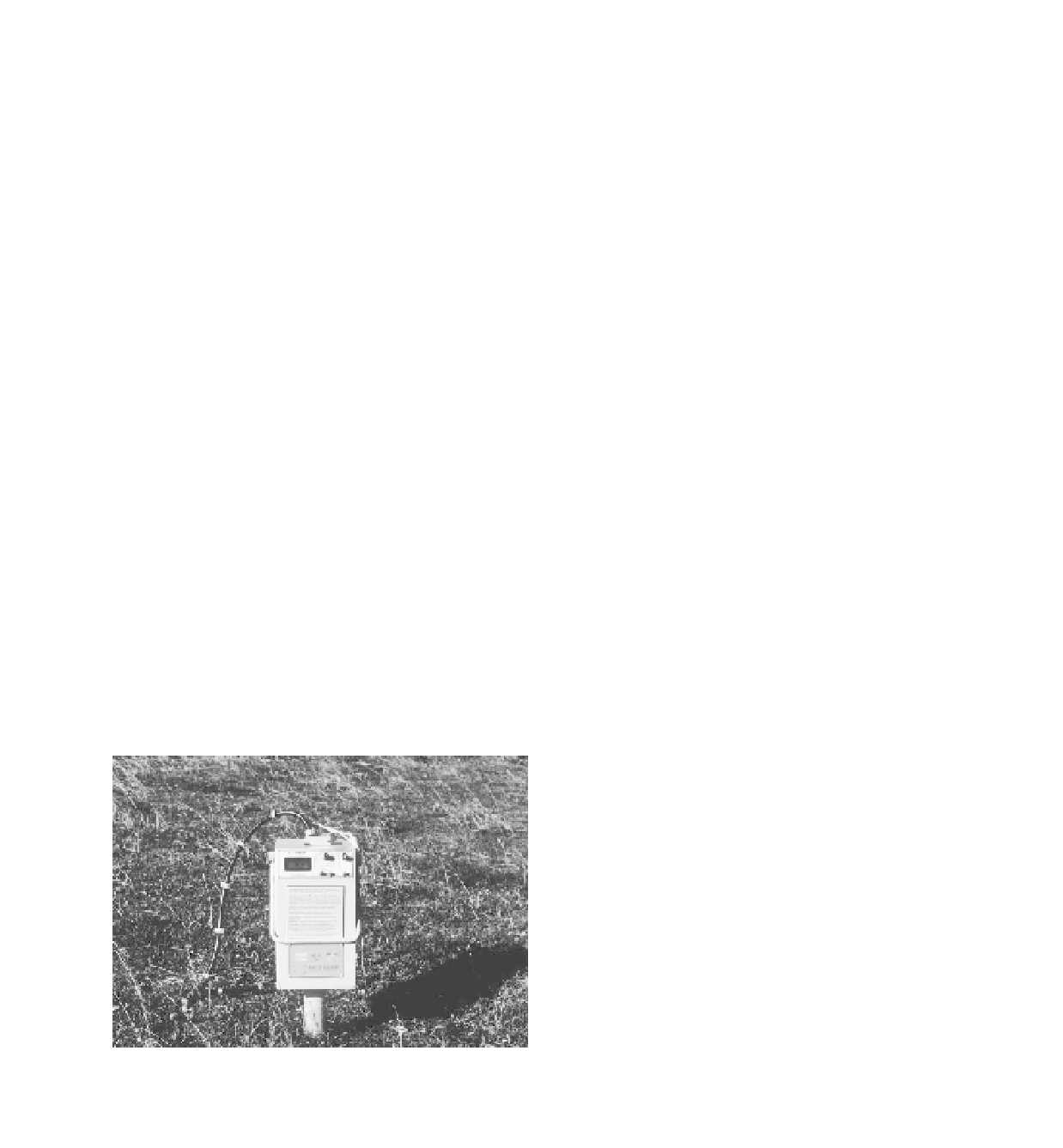Geoscience Reference
In-Depth Information
of slow neutrons returning towards the radioactive
tip, and this can be related to the soil moisture
content. The neutron probe readings need to be
calibrated against samples of soil with known
moisture contents. This is often done by using
gravimetric analysis on the samples collected while
the access tubes are being put in place. It is also
possible to calibrate the probe using reconstituted
soil in a drum or similar vessel. It is important
that the calibration occurs on the soil actually being
measured, since the fast:slow neutron ratio will
vary according to mineralogy of the soil.
Although the neutron probe is essentially non-
destructive in its measurement of soil water content,
it is not continuous. There is a requirement for
an operator to spend time in the field taking
measurements at set intervals. This may present
difficulties in the long-term monitoring of soil
moisture. Another difficulty with a neutron probe
is that the neutrons emitted from the radioactive
tip move outwards in a spherical shape. When the
probe tip is near the surface some of the sphere
of neutrons will leave the soil and enter the atmos-
phere, distorting the reading of returning slow
neutrons. A very careful calibration has to take place
for near-surface readings and caution must be
exercised interpreting these results. This is unfor-
tunate as it is often the near-surface soil moisture
content that is of greatest importance. Although
neutron probes are reliable instruments for the
monitoring of soil moisture the cost of the instru-
ments, difficulties over installing access tubes
(Figure 4.10), calibration problems and the near-
surface problem have meant that they have seldom
been used outside a research environment.
Electrical resistance blocks:
Electrical resistance blocks
use a measurement of electrical resistance to infer
the water content of a soil. As water is a conductor
of electricity it is reasonable to assume that the
more water there is in a soil the lower the electrical
resistance, or conversely, the higher the electri-
cal conductivity. For this instrumentation two small
blocks of gypsum are inserted into the soil and
a continuous measurement of electrical resistance
between the blocks recorded. The measure of
electrical resistance can be calibrated against gravi-
metric analysis of soil moisture. The continuity
of measurement in electrical resistance blocks is
a great advantage of the method, but there are
several problems in interpreting the data. The main
difficulty is that the conductivity of the water is
dependent on the amount of dissolved ions con-
tained within it. If this varies, say through the
application of fertiliser, then the electrical resistance
will decrease in a manner unrelated to the amount
of water present. The second major difficulty is that
the gypsum blocks deteriorate with time so that
their electrical conductivity alters. This makes for
a gradually changing signal, requiring constant
recalibration. The ideal situation for the use of
electrical resistance blocks is where they do not sit
in wet soil for long periods and the water moving
through the soil is of relatively constant dissolved
solids load. An example of this type of situation is
in sand dunes, but these are not particularly
representative of general land use.
Time domain reflectometry:
Time domain reflectometry
(TDR) is a relatively new soil moisture measure-
ment technique. The principle of measurement is
that as a wave of electromagnetic energy is passed
through a soil the wave properties will alter. The
Figure 4.10
A neutron probe sitting on an access tube.
The black cable extends down into the tube with the
source of fast neutrons (and counter) at the tip.

